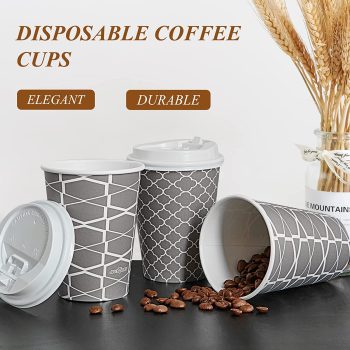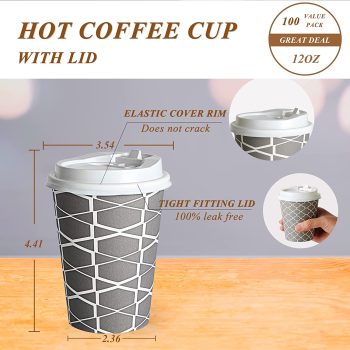- Raw Material Extraction and Sourcing:
- The lifecycle begins with the sourcing of raw materials, primarily wood pulp from trees. Sustainable forestry practices ensure that trees are harvested responsibly, reducing the environmental impact.
- Paper Production:
- Wood pulp is processed and turned into paperboard, the main material for paper cups.
- The paperboard may undergo treatments to enhance its strength, water resistance, and printability.
- Sustainable manufacturing processes and technologies help minimize energy consumption and emissions.
- Cup Manufacturing:
- The paperboard is shaped into cup blanks using cutting and forming machines.
- The blanks are then coated with a thin layer of wax or a plastic lining to make them waterproof and suitable for holding liquids.
- Printing and Branding:
- Graphics, branding, and other designs are printed onto the cups using eco-friendly printing techniques.
- Customization allows businesses to showcase their logos and messages.
- Distribution and Use:
- The cups are distributed to businesses, cafes, restaurants, events, and other establishments.
- Consumers use the cups for various beverages.
- End-of-Life Options:
- Depending on local waste management infrastructure and cup design, there are several end-of-life options:
a. Composting: If the cups are made from compostable materials and the necessary facilities exist, they can be composted along with organic waste.
b. Recycling: Some recycling facilities can separate the paper from the lining, enabling recycling. However, this process can be challenging due to the presence of plastic or wax coatings.
c. Incineration: In some cases, paper cups might be incinerated to produce energy, although this is less eco-friendly than recycling or composting.
d. Landfill: If no other options are available, paper cups may end up in landfills, where they decompose slowly due to the anaerobic conditions.
- Depending on local waste management infrastructure and cup design, there are several end-of-life options:
- Recycling Process (If Applicable):
- If paper cups are recycled, they are collected and sent to recycling facilities.
- The cups are typically mixed with other paper products and subjected to a pulping process to separate fibers from contaminants.
- The resulting paper pulp can be used to produce new paper products.
- New Paper Product Creation:
- The recycled paper pulp is used to create new paper products, which can include various types of paperboard or packaging materials.
Throughout the lifecycle, considerations for sustainability and environmental impact play a crucial role. The goal is to minimize the negative effects on the environment by sourcing materials responsibly, reducing energy consumption during manufacturing, promoting recycling and composting, and ultimately reducing waste in landfills. As technology advances and environmental awareness grows, the paper cup lifecycle continues to evolve to align with green initiatives and eco-friendly practices.





























